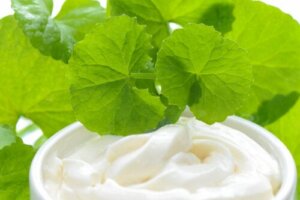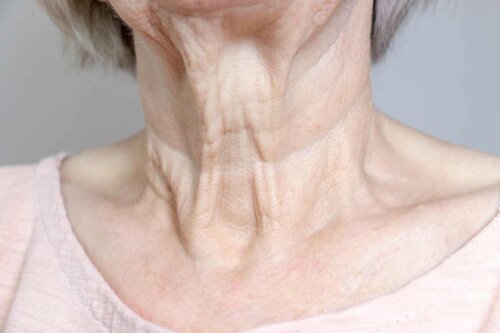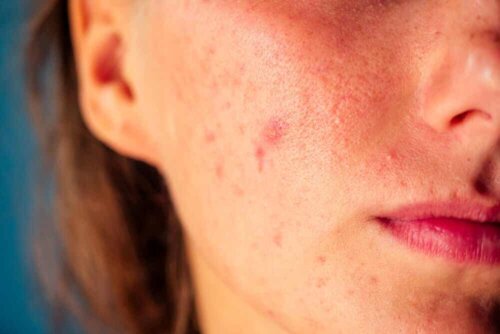Cica Cream: What is it and what's it for?

Cica cream is used to treat wrinkles and scars. This product has grown in popularity and is now a fundamental part of many people’s routines. This is thanks to the fact many people use it to treat irritations, sensitive skin, and dryness.
The term cica comes from the Spanish cicatrice, meaning “scar” and it alludes to the cream’s star ingredient: Asiatic spark. This is a herb that many people have been using throughout history to treat dermatological problems.
Specialists have reformulated these healing balms to include active ingredients that care for wrinkles more delicately. In fact, the function of cica cream is to treat wrinkles as if they were scars.
Let’s find out more about this product!
What is cica cream?
In winter, masks or general stress are factors that can abuse the skin, making it look dry and chapped. However, these problems can be absorbed with cica creams made with a base of Asiatic spark. This is a plant that we can find in Asia and the south of Africa. There, many people know it as gotu kola.
People have been using this herb for 3,000 years to heal wounds. Also, according to legend, Bengal tigers would rub their wounds on this herb after fights, which would help them to heal. This is why it’s also known as tiger grass.
In addition to that, although cica creams originally were pharmacy products, today, their uses have become more diverse through the production of extracts. One of these is madecassoside, which stimulates the skin’s collagen production.

How does cica cream work?
Cica cream isn’t the same as a healing balm you may find at a pharmacy. This is because other active ingredients help the healing process to moisturize the skin.
These creams strengthen the skin’s barrier and are great for skin with acne or redness. In fact, cica creams can have antioxidizing and anti-inflammatory properties as well as the ability to stimulate the production of collagen.
Various scientific studies show the benefits of cica creams when it comes to controlling other skin-related issues:
- Eczema and psoriasis: A 2017 study detected that when these creams contain hydrating compounds that avoid inflammation, they’re very useful for dealing with these two skin disorders.
- Wrinkles: Two-thirds of people that use asiaticoside, one of the extracts of Asiatic spark, experienced a noticeable improvement in the area around their eyes during a 2008 study.
- Dryness and irritation: Asiatic spark allows for a deeper moisturization, which helps the skin barrier’s principle function against external agents, like the cold or contamination.
- Acne: In a 2018 study, specialists used a madecassoside extract, which as a result, reduced skin inflammation.
Also read: Skin Problems? Try These Fascinating Masks!
How to use cica cream
People with all skin types can use cica creams because they help cellular regeneration. However, it’s better to use them if you have a wound, deep wrinkles, or if your skin’s protective barrier is affected.
The way you use the cream depends on your skin type. For example, if you have dry skin that needs preparing, you should use cica cream every day.
Another characteristic of the cream is that it’s very useful after an aesthetic treatment, like an exfoliation. In these cases, you should use it once a day as the last step in your skin routine.

Discover: Is There a Relationship Between Diet and Acne?
A useful and varied skin treatment
Overall, it’s important to ensure that the product you use has Asiatic spark as its main ingredient. It’s best to buy this cosmetic as a serum or a cream because these versions penetrate the skin better and don’t leave an oily texture behind.
Another aspect that you shouldn’t forget is that cica creams are thicker than hydrating creams. However, this has a huge advantage: they’re not comedogenic, which means they won’t block your pores. As a result, this prevents the development of acne!
All cited sources were thoroughly reviewed by our team to ensure their quality, reliability, currency, and validity. The bibliography of this article was considered reliable and of academic or scientific accuracy.
- Wieslawa Bylka, Paulina Znajdek, Elzbieta Studzinska, Malgorzata Brzezinska. Centella asiatica in cosmetology. Dermatol Alergol [Internet] 2013 [consultado julio 2021]; volumen (30): páginas 46-49. Disponible en: https://www.ncbi.nlm.nih.gov/pmc/articles/PMC3834700/
- Park, Ju Ho, et al. “Anti-inflammatory effect of titrated extract of Centella asiatica in phthalic anhydride-induced allergic dermatitis animal model.” International journal of molecular sciences 18.4 (2017): 738.
- Lee, J., et al. “Evaluation of the effects of a preparation containing asiaticoside on periocular wrinkles of human volunteers.” International journal of cosmetic science 30.3 (2008): 167-173.
- Shen, Xueqing, et al. “Propionibacterium acnes related anti-inflammation and skin hydration activities of madecassoside, a pentacyclic triterpene saponin from Centella asiatica.” Bioscience, biotechnology, and biochemistry 83.3 (2019): 561-568.
This text is provided for informational purposes only and does not replace consultation with a professional. If in doubt, consult your specialist.








